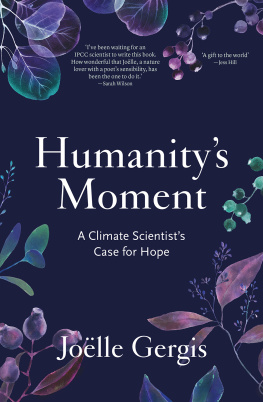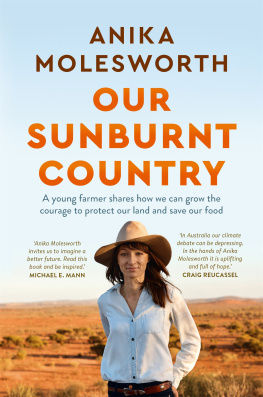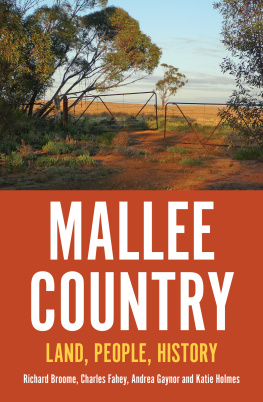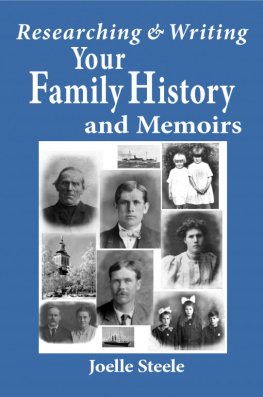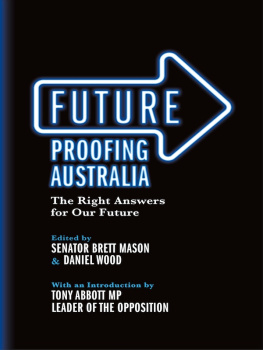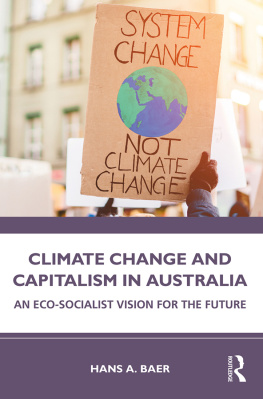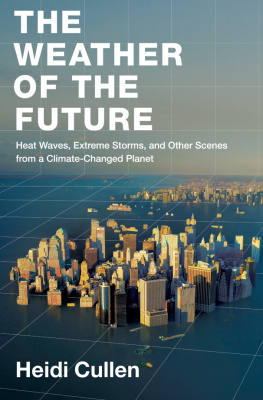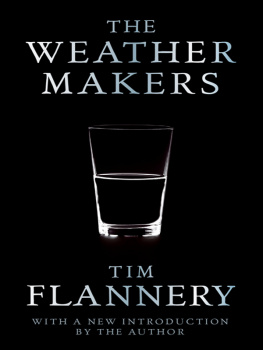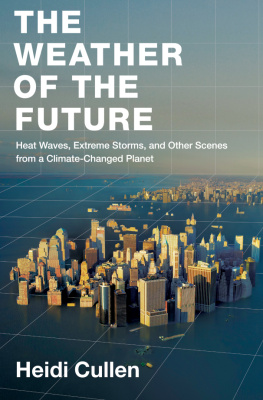Joelle Gergis - Sunburnt country : the history and future of climate change in Australia
Here you can read online Joelle Gergis - Sunburnt country : the history and future of climate change in Australia full text of the book (entire story) in english for free. Download pdf and epub, get meaning, cover and reviews about this ebook. year: 2018, genre: Romance novel. Description of the work, (preface) as well as reviews are available. Best literature library LitArk.com created for fans of good reading and offers a wide selection of genres:
Romance novel
Science fiction
Adventure
Detective
Science
History
Home and family
Prose
Art
Politics
Computer
Non-fiction
Religion
Business
Children
Humor
Choose a favorite category and find really read worthwhile books. Enjoy immersion in the world of imagination, feel the emotions of the characters or learn something new for yourself, make an fascinating discovery.

- Book:Sunburnt country : the history and future of climate change in Australia
- Author:
- Genre:
- Year:2018
- Rating:5 / 5
- Favourites:Add to favourites
- Your mark:
- 100
- 1
- 2
- 3
- 4
- 5
Sunburnt country : the history and future of climate change in Australia: summary, description and annotation
We offer to read an annotation, description, summary or preface (depends on what the author of the book "Sunburnt country : the history and future of climate change in Australia" wrote himself). If you haven't found the necessary information about the book — write in the comments, we will try to find it.
Joelle Gergis: author's other books
Who wrote Sunburnt country : the history and future of climate change in Australia? Find out the surname, the name of the author of the book and a list of all author's works by series.
Sunburnt country : the history and future of climate change in Australia — read online for free the complete book (whole text) full work
Below is the text of the book, divided by pages. System saving the place of the last page read, allows you to conveniently read the book "Sunburnt country : the history and future of climate change in Australia" online for free, without having to search again every time where you left off. Put a bookmark, and you can go to the page where you finished reading at any time.
Font size:
Interval:
Bookmark:
THE HISTORY AND FUTURE OF CLIMATE CHANGE IN AUSTRALIA
JOLLE GERGIS

MELBOURNE UNIVERSITY PRESS
An imprint of Melbourne University Publishing Limited
Level 1, 715 Swanston Street, Carlton, Victoria 3053, Australia
mup-contact@unimelb.edu.au
www.mup.com.au

First published 2018
Text Jolle Gergis, 2018
Design and typography Melbourne University Publishing Limited, 2018
This book is copyright. Apart from any use permitted under the Copyright Act 1968 and subsequent amendments, no part may be reproduced, stored in a retrieval system or transmitted by any means or process whatsoever without the prior written permission of the publishers.
An excerpt from chapter 18 was originally published in Cosmos magazine in 2007.
Every attempt has been made to locate the copyright holders for material quoted in this book. Any person or organisation that may have been overlooked or misattributed may contact the publisher.
Typeset in 11/13.5 pt Bembo by Cannon Typesetting
Cover design by Design by Committee
Printed in China by 1010 Printing International
| A catalogue record for this |
9780522871548 (paperback)
9780522871555 (ebook)
A book must be the axe for the frozen sea within us.
Franz Kafka
We are all interested in the weather because it affects everything we do, our lives and our livelihoods. We want to know what clothes to wear, whether to take an umbrella or a coat, when to watch out for frost or heatwaves, thunderstorms or bushfires, extremes of any kindwet or dry, hot or cold. In Australia, we know the weather never stays the same for long. It changes from hour to hour, day to day, week to week, with the seasons, and from year to year. Our highly changeable weather and climate have entered our literature and our folklore, from Dorothea Mackellars famous poem describing Australia varying from drought to floods, to John OBriens Hanrahan telling us that well all be ruined by too little rain, or too much rain, or bushfires or
In 2008, a young researcher, Dr Jolle Gergis, contacted me about a proposal to reconstruct Australias climate history for as much of the last thousand years as possible. She had completed her PhD on reconstructing a global history of El Nio two years earlier and had just submitted her proposal for funding to the Australian Research Council. We met in my office at the University of Melbourne and she told me how she now wanted to study Australias climate history by combining early weather observations from the colonies of New South Wales, Victoria and Van Diemens Land with diary entries, newspaper stories and government reports from the nineteenth century and climate information for the last millennium extracted from tree rings, corals and ice cores. It was a massive task that hadnt been attempted before.
I was impressed by Jolles passion and by her proposal, as I had already compared global temperature reconstructions for the last thousand years with observations and climate model simulations for the last century. I was trying to extend the observational record further into the past to provide a better assessment of the range of natural climate variability over longer periods. I knew that no such climate reconstruction existed for Australia as a whole or for south-eastern Australia, which had the highest concentration of early weather observations and written records from colonists.
Unfortunately, I had to tell Jolle that her proposal was very unlikely to be funded in its form at the time, because she was an early career researcher and she was trying to do it mainly on her own. However, I liked her proposal so much that I offered her a one-year research position, during which she rewrote the proposal, scaling up the research team to include some of Australias leading experts in the field and linking it with the major state libraries in Sydney, Melbourne and Canberra, the Bureau of Meteorology, and several other agencies interested in the climate history of south-eastern Australia. The SEARCH (South Eastern Australian Recent Climate History) project was born, resubmitted to the Australian Research Council, and funded in 2009. It was a tremendous success and was awarded the Eureka Prize for Excellence in Interdisciplinary Scientific Research in 2014.
This book, Sunburnt Country, has arisen from that project and is complemented by Jolles personal insights and experiences as she pieced together Australias climate history. It tells many stories about how Australias weather and climate has varied over the last thousand years and is likely to change over the next century, affecting the environment and people, including Indigenous communities, colonial settlers from the First Fleet to Federation, current Australian society and future generations. This powerful book fills a crucial gap in public understanding.
It is critically important that we become more climate-literate so that we can better manage and adapt to the impacts of future weather and climate extremes. Our understanding of the weather and its variations is coloured by our local experience and our short memories. The very large natural variability of Australias climate helps to explain why some people find it difficult to recognise the different climate we are experiencing now. In some ways, this is much like the decades that it took for the early settlers and the colonial government in Sydney to accept that the weather and climate they experienced in New South Wales was different from what they knew from their earlier lives in England.
Sunburnt Country helps us to better understand Australias climate history and future; the droughts, flooding rains and bushfires, and how they affect people. It sets the current and future climate change caused by human activity on the solid foundation of history.
David Karoly
Professor of Atmospheric Science,
University of Melbourne
The women screamed as the huge waves crashed loudly on the wooden deck. Horrified, they watched the foaming torrent wash away their blankets. Many dropped to their knees, praying for the violent rocking to stop. The sea raged around them as the wind whipped up into a frenzy, damaging all but one of the heavily loaded ships.
The severe storm was yet another taste of the ferocious weather that slammed the First Fleet as it made its way across the Southern Ocean in December 1787. Now, after an eight-month journey from England in a ship riddled with death and disease, the passengers introduction to Australia was also far from idyllic. The unforgiving weather that greeted the First Fleet was a sign of things to come. More than once, intense storms would threaten the arrival of the ships and bring the new colony close to collapse. So how did the early arrivals to Australia deal with such extreme weather? Have we always had a volatile climate? To answer these questions, we need to follow Australias colonial settlers back beyond their graves and trace through centuries-old documents to uncover what the climate was like from the very beginning of European settlement. By poking around in the settlers old diaries, letters and newspaper clippings, we can begin to piece together an idea of what the countrys climate was like long before official weather measurements began.
Font size:
Interval:
Bookmark:
Similar books «Sunburnt country : the history and future of climate change in Australia»
Look at similar books to Sunburnt country : the history and future of climate change in Australia. We have selected literature similar in name and meaning in the hope of providing readers with more options to find new, interesting, not yet read works.
Discussion, reviews of the book Sunburnt country : the history and future of climate change in Australia and just readers' own opinions. Leave your comments, write what you think about the work, its meaning or the main characters. Specify what exactly you liked and what you didn't like, and why you think so.

